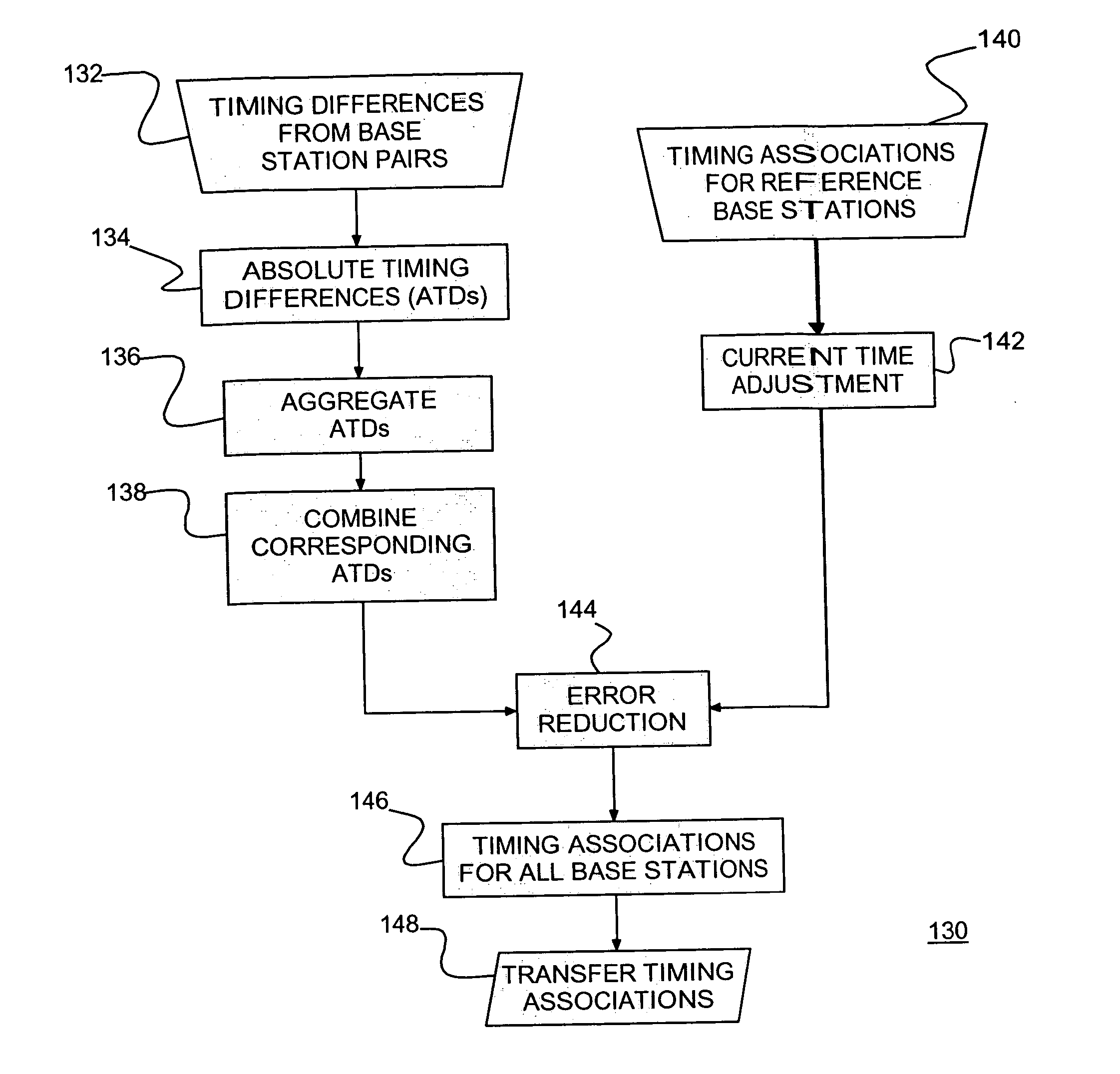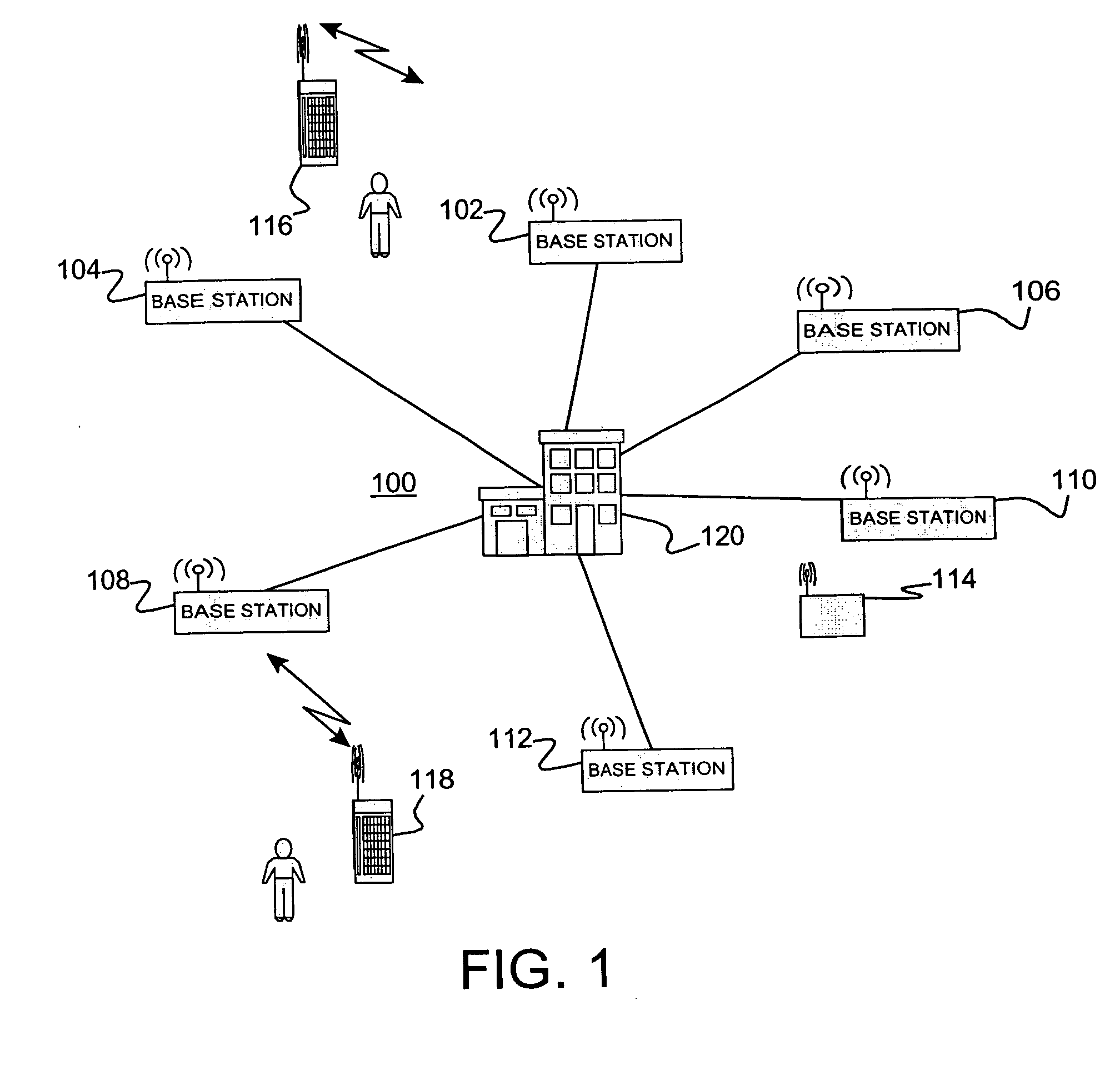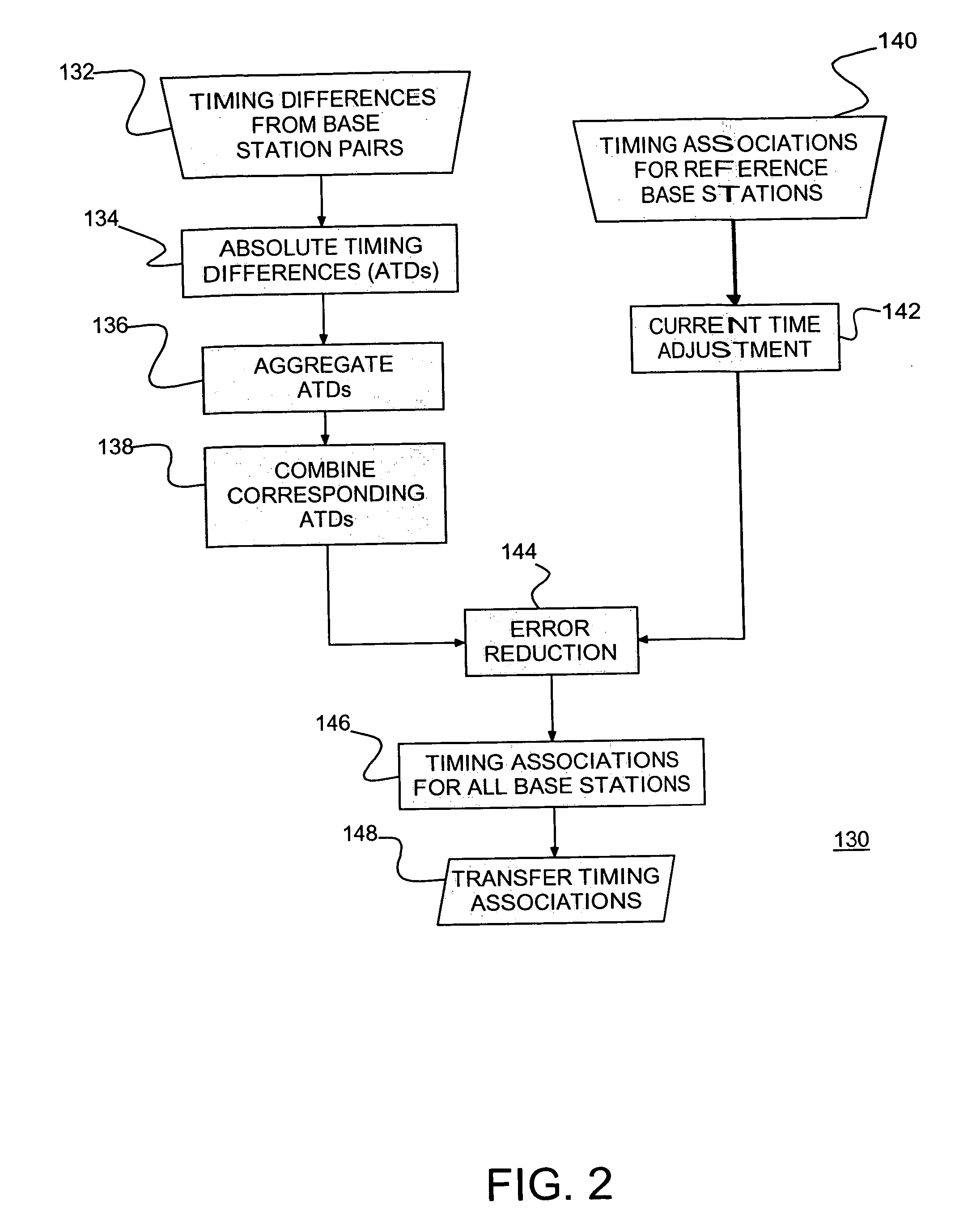Precise common timing in a wireless network
a wireless network and frequency technology, applied in the field of wireless communication networks, can solve the problems of increasing cost and deployment time, requiring additional hardware for gsm lmus, and expensive additions, and achieve the effect of improving the gps positioning capability and performance of mobile units
- Summary
- Abstract
- Description
- Claims
- Application Information
AI Technical Summary
Benefits of technology
Problems solved by technology
Method used
Image
Examples
Embodiment Construction
Turning now to the drawings and, more particularly, FIG. 1 shows an example of a preferred embodiment wireless network 100 or system, e.g., a Global System for Mobile Communication (GSM) network, a Time Division Multiple Access (TDMA) network, Code Division Multiple Access (CDMA) network or an equivalent network. One or more timing marker units or timing markers 114 at known locations are dispersed throughout the system or subsystem reception area. The wireless network 100 serves mobile stations or units 116, 118 within reception range of at least one of the base stations 102, 104, 106, 108, 110, 112. Mobile units 116, 118 may include cellular phone handsets (cell phones) or other devices with a wireless communications interface, e.g., a computing device such as a personal digital assistant (PDA), laptop computer or tablet computer etc. Base station transceivers (BTS), also commonly referred to simply as “base stations”, 102, 104, 106, 108, 110, 112 are connected to a central entit...
PUM
 Login to View More
Login to View More Abstract
Description
Claims
Application Information
 Login to View More
Login to View More - R&D
- Intellectual Property
- Life Sciences
- Materials
- Tech Scout
- Unparalleled Data Quality
- Higher Quality Content
- 60% Fewer Hallucinations
Browse by: Latest US Patents, China's latest patents, Technical Efficacy Thesaurus, Application Domain, Technology Topic, Popular Technical Reports.
© 2025 PatSnap. All rights reserved.Legal|Privacy policy|Modern Slavery Act Transparency Statement|Sitemap|About US| Contact US: help@patsnap.com



